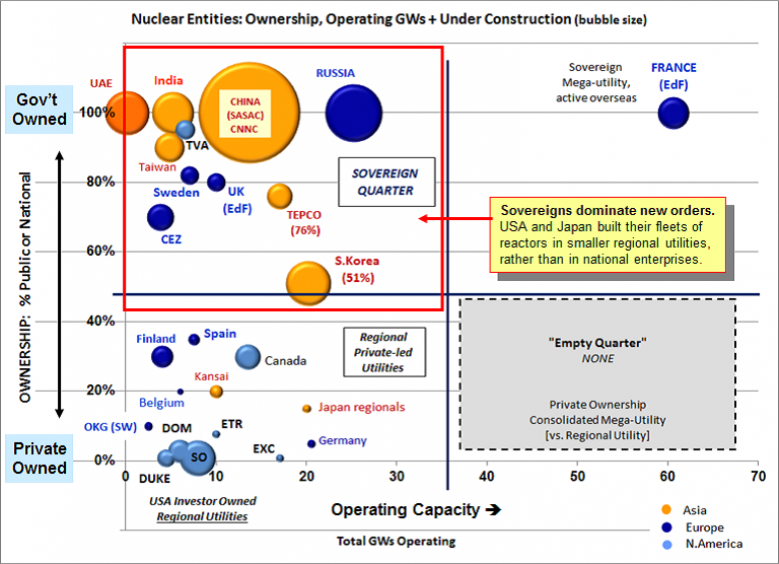Primary tabs

Global Nuclear Landscape to 2040 -- US still in Premier League, or relegated?
Expanding populations in Asia, high levels of economic growth, and increasing urbanization are combining to create demand for large amounts of reliable and affordable base-load electricity. Governments in Asia and some in the Middle East have recognized this need and have made nuclear power a major part of the energy mix they are developing to meet this demand. China alone is expected to have eight mega-cities (population over ten million) and more than 200 cities with over one million residents by 2030. Affordable baseload electricity is crucial for these countries to sustain the high level of economic growth they have experienced during the last decade. Government support, via regulations and financing, has been pivotal to the accelerated growth of nuclear energy. In China and India, as well as most of Asia and Europe, government enterprises are responsible for the construction and operation of nuclear power plants.The USA cannot idly let its leadership position wither away in the global nuclear energy landscape. In the nuclear arena, leadership cannot be simply “restored” based on the old “push” model of Supply-side dominance from the 20th Century. Urban demand-side factors outside Europe and North America now are pulling nuclear power construction forward in the 21st Century to satisfy burgeoning electric demand, primarily in Asian cities, and for growing populations and water needs in the Middle East and Africa. USA and allies must redefine leadership in nuclear energy via international partnerships and alliances that are unfolding now.
Reference: http://www.climatechangebusiness.com/Policy_Market_Factors_Shaping_National_Nuclear_Strategies
